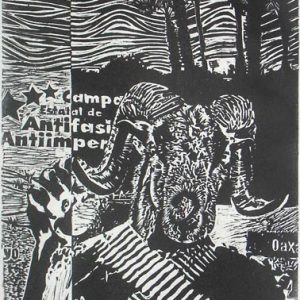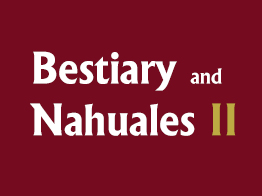Los bestiarios fueron particularmente populares en Inglaterra y Francia alrededor del siglo XII y eran principalmente compilaciones de textos anteriores. El primer bestiario en la forma en que se popularizó más tarde fue un volumen griego anónimo del siglo II llamado Physiologus, que en sí mismo resumía el conocimiento y la sabiduría antiguos sobre los animales en los escritos de autores clásicos.El artista italiano Leonardo da Vinci también hizo su propio bestiario.
El bestiario más conocido de esa época es el Bestiario de Aberdeen. Hay muchos otros y hoy sobreviven más de 50 manuscritos. En los tiempos modernos, artistas como Henri de Toulouse-Lautrec y Saul Steinberg han producido sus propios bestiarios. Jorge Luis Borges escribió una especie de bestiario contemporáneo, el Libro de los seres imaginarios, que recopila bestias imaginarias de bestiarios y ficción.
Nahual en la mitología azteca y maya era un ser espiritual, similar a un ángel de la guarda, que se manifestaba en forma de animal. Cada persona tenía un nahual que los vigilaba y protegía. Dependiendo del día de su nacimiento en el antiguo calendario adivinatorio, cada persona recibe un nahual diferente. Los padres pueden ocultarle esto al niño hasta que madure lo suficiente como para usar el conocimiento de manera responsable. Esto puede deberse a la preocupación de que la persona pueda parecerse a su animal nahual o desarrollar características relacionadas. Creían que, si un hombre puede conocer su espíritu primitivo o Nahual, puede usarlo para curar a la gente y practicar magia. “El Nahual sólo puede transformarse de noche y ataca a nuestros bebés con hechizos infernales”, decía la gente durante la época colonial. La Santa Inquisición (el tribunal católico que castigaba a los judíos, las brujas y los no católicos en general) persiguió a los nahuales durante muchos años. Pero la gente creía en su poder y, a veces, los protegía, especialmente en los pueblos indígenas. La mayoría de los antropólogos están de acuerdo en que la tradición de estos espíritus continúa en todas las ciudades y pueblos mexicanos modernos, y muchos tienen al menos un Nahual que actúa en representación de estos espíritus.
Veinte grabadores interpretan este portafolio de doble temática desde su propio punto de vista. Algunos artistas solo hicieron un acercamiento a las bestias, otros solo a los nahuales y otros una combinación de ambos.























